Kenmore 2 Sewing Machine Review: 158.1010180 or 158.1110181
*This post may include affiliate links, which allow me to make a small commission off your purchases. The money is earned at no additional cost to you.
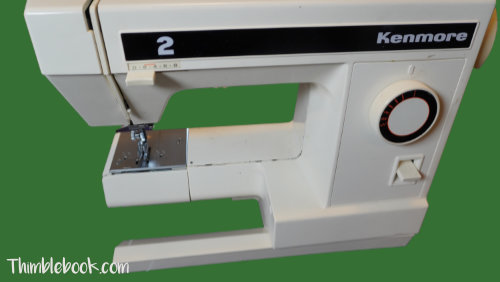
Kenmore 2 is a 1Amp sewing machine with two stitches on it, straight stitch and zig zag. The machine was made in Taiwan and has model number 158.1010180. The manual has an additional model number on it, which I assume is big sister Kenmore 4 stitch machine (model number 158.1110181).
Spare Parts
*There aren’t a great deal of reviews on this machine because it isn’t one of those heirloom quality pieces you pass down. But, I left links to the few replacement parts I could find below.
- 3 Uneven Prong Foot Control Pedal FIT for Kenmore
- Kenmore Needle Plate 64156
- Bobbin Case No. 63963 (INCREDIBLY HARD TO FIND)
- Bobbin Case Holder ( INCREDIBLY HARD TO FIND)
Backstory
Kenmore 2 belonged to my grandmother and never worked from day one. If you would like to learn more about the backstory to this sewing machine and why it never worked, check out the YouTube video here.
Otherwise, keep reading because there are some well… interesting details about this machine.
Kenmore 2 is STRANGE.
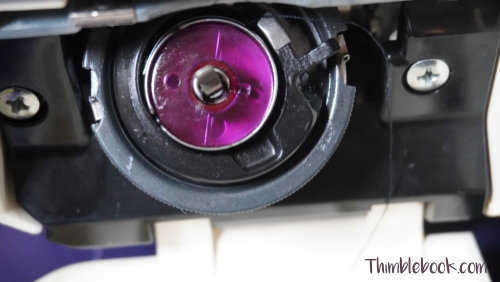
This sewing machine has a very awkward bobbin system. The bobbin case holder is 0dd because it is made of plastic while the bobbin case itself is metal. Plastic on metal is never a good thing when it comes to rapidly spinning sewing machine parts because it causes undo wear and tear.
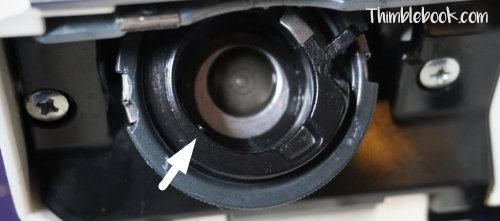
Also, the metal bobbin case must fit into a plastic bump inside the bobbin case holder. Once you rest the bobbin case groves over the bump, you have to close the bobbin case latch because it doesn’t close by itself . The plastic bump and bobbin case latch both add unnecessary additional steps to the process of loading a bobbin. For this reason, I say Kenmore 2 is an odd character.
I Also Noticed…
The bottom bobbin area leaves much to be desired, but the upper thread tension assembly does a worse job. First, I’m going to explain the ordinary upper thread tension and how it works.
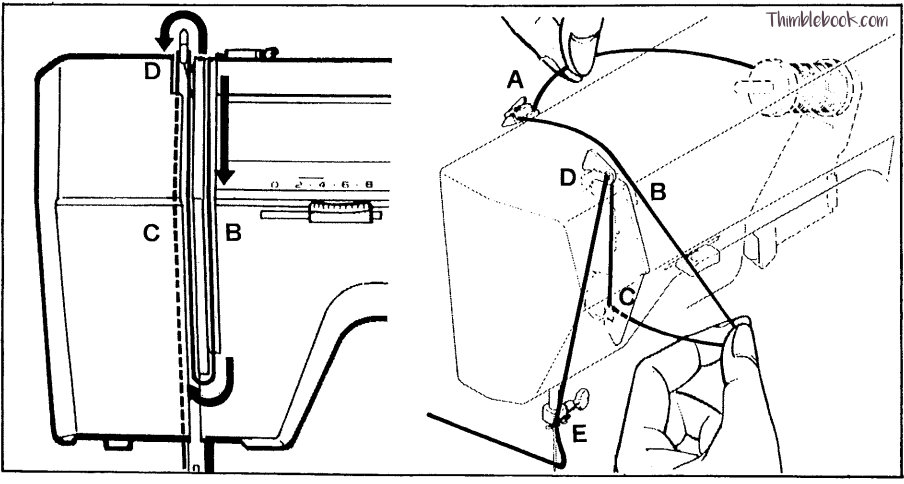
When you are threading sewing machines, the thread goes on a special path from spool to sewing machine needle. On this path, the thread passes thru disks. When the presser foot is dropped, the disks close on your thread to create perfect thread tension for sewing. Then, adjustments to upper disks tension can be made by making an adjustment to a knob. Normally, the disks is about the same thickness as a metal credit card.
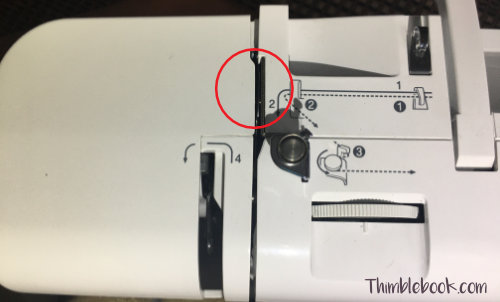
Normal sized disks on Brother 625SE.
On Kenmore 2, however, the disk is the thickness of a piece of paper. Since the disk is so thin, it makes the upper thread tension extremely delicate. I’ve seen my fair share of tension assemblies. But, I’ve never seen a disk so thin!
*I certainly wish I had been able to take a picture, but it was very difficult to do so.
Another Very Odd Feature.

There is no feed dog drop on this machine. Instead, the manufacturer makes you change the needle plate to cover up feed dogs. I know this machine was made in the late 80’s to mid 90’s, but they sure did take it back to 1883 with the whole needle plate cover design.
Another Cog Gear Buttonhole
This machine comes with a Cog Gear buttonhole system similar to the one that comes with my Kenmore 158.19412. Unfortunately, I have no idea where the buttonhole attachment is located. I only know how much I’ve always hated Kenmore buttonhole system! If you want to know more about the buttonhole system, check out the article Kenmore 158.1941: Parts List + Everything You Need to Know.
The One Saving Grace.
One positive aspect about Kenmore 2 is it’s stitch length between 0-24. This awesome for making super long basting stitches or ultra narrow satin stitches. Aside from having a long basting stitch, Kenmore 2 really doesn’t have anything else going for it. If you own the sewing machine, I’m sorry for this review 🙁
Other Helpful Articles
2 Comments
Leave a response

Hi, I have a Kenmore 158.1255181 (labeled Kenmore 8 on the front) which I left you a comment about a few months ago, inquiring about its year of manufacture. Thanks for that response! Upon reading about the Kenmore 2, I see that it uses the same bobbin, case holder, and feed cover plate as my Kenmore 8. My “8” also has the same unusual upper thread tension system, so these machines must be close cousins. It’s a shame these models were constructed to not allow easy disassembly for maintenance; I’d sure like to get inside and give it a good cleaning. Thanks very much for your review of the “2”, and the links provided for the hard-to-find parts. Cheers!
I’m glad you were able to find the correct parts 🙂